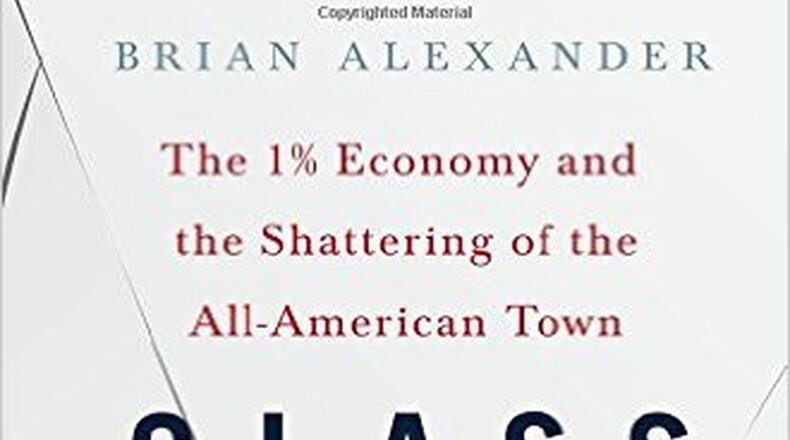He just published a book detailing the chain of events that took place over decades as Lancaster went from being a great place to live to someplace a lot less stable and secure. In “Glass House — the 1% Economy and the Shattering of the All-American Town” Alexander documents how this company town experienced its prosperity melting away.
The industrial engine powering the economy of Lancaster for over a century was the “Anchor” of the town. Alexander explains that it was “founded in 1905, the Hocking Glass Company merged with the New York-based Anchor Cap and Closure in 1937. By the late 1960s, it was the world’s largest manufacturer of glass tableware, the second largest maker of glass containers-beer bottles, baby food jars, coffee jars, liquor bottles-and employed more than 5,000 people in Lancaster, a town of about 29,000 back then.”
Generations of Lancaster residents prospered while laboring in glass factories. Today Anchor Hocking is no longer leading the field. Only a thousand Lancaster residents work there-the numbers have been in decline for years. What happened? How were Lancaster’s glass dreams shattered?
In “Glass House” we find a case study of how a once industrious community can wither away. By the 1970s, the Anchor as it was known in Lancaster had become a target for corporate raiders. The author details how things shifted while the company was bought and sold, then bought and sold again.
New owners intently squeezed profits out of the company. Anchor executives had once resided in the community. They invested in Lancaster. That was changing, too. As long-time managers retired or were forced out of the company they were being replaced by people from other places. Some of these executives knew next to nothing about glass manufacturing or Lancaster.
The company had lost its way. Families who had provided generations of loyal workers for the glass factories in Lancaster could usually find jobs there but morale was in free fall. Alexander interviewed many people for this book; retired glass workers, current ones, former executives and assorted townspeople.
Foreign competition grew fierce. Anchor ownership seemed intent on generating quick revenue from the kind of Wall Street financial shenanigans that have become commonplace. Plant infrastructure deteriorated. Essential machinery was not being replaced. All in the name of squeezing every last penny of profit out of Anchor for the new owners. Anchor had lost its competitive edge.
Industrial decay begets social problems. High-interest lenders preyed on citizens who fell between the cracks. Some Lancaster residents became involved in bringing heroin and other drugs to town. The author grew up there-his family has a history in the glass industry. He knows it well. This is a well documented examination of how this once flourishing Ohio town became something else altogether.
About the Author

